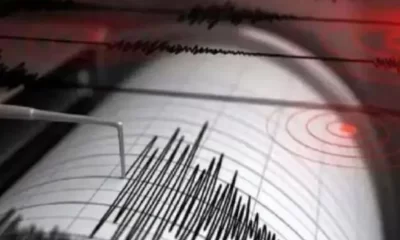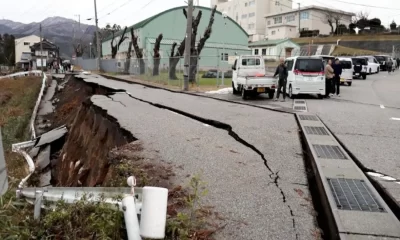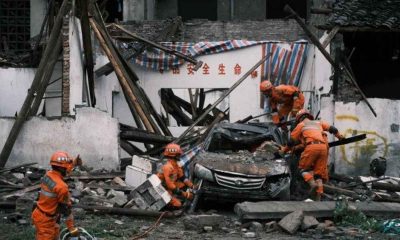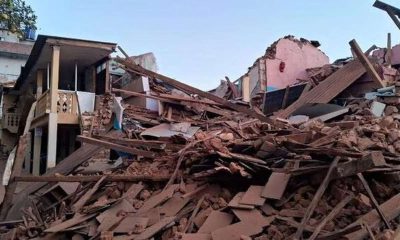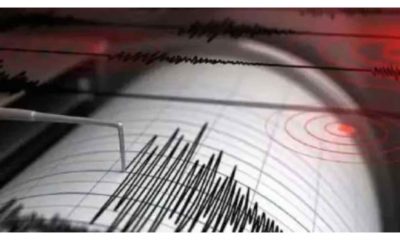Latest world news
Turkey-Syria earthquake: Builders sued as death toll tops 33,000
The death count in the massive earthquake that devastated Turkey and Syria last week, has topped 33,000, as Turkish authorities began legal action against builders for the building collapses and deployed several measures in a bid to maintain order across the disaster zone.
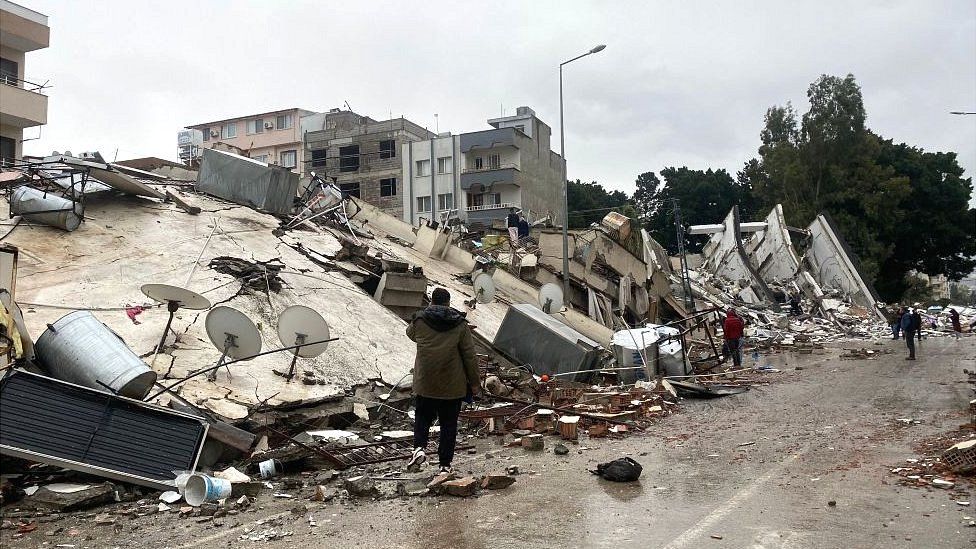
The death count in the massive earthquake that devastated Turkey and Syria last week, has topped 33,000, as Turkish authorities began legal action against builders for the building collapses and deployed several measures in a bid to maintain order across the disaster zone.
On Sunday, rescue workers continued to pull more survivors from under the rubble, however, the chances of finding more survivors are dwindling each passing since the disaster hit.
Authorities confirmed that at least 33,000 people are confirmed dead across both countries in what is described as the deadliest quake to strike Turkey since 1939, even as the death count is expected to rise over the coming days as bodies are pulled from the debris.
According to reports, business owners in Antakya in southern Turkey—one of the worst hit cities—emptied their shops on Sunday to secure their merchandise from being robbed by looters who are roaming the streets.
A Reuters report quoting residents and aid workers from other cities cited worsening security conditions, with widespread accounts of businesses and collapsed homes being robbed.
President Tayyip Erdogan, who has faced backlash over his government’s response to the disaster, has assured that authorities will deal firmly with looters.
In militant-held northwest Syria—one of the hardest hit areas by the quake—thousands are once again homeless in the war-torn nation as the region has received meagre aid compared to government-held areas.
United Nations aid chief Martin Griffiths in a tweet said that “we have failed” the people in north-west Syria and that they feel abandoned, adding that he was focused on addressing that swiftly.
-Miracles-
Nearly a week after the disaster, survivors miraculously clinging to life under the rubble of buildings that became tombs for thousands, were found by rescue workers.
54-year-old Malik Milandi of Syria, was rescued by a team of Chinese rescuers and Turkish firefighters after he survived 156 hours under the rubble in Antakya.
A father and daughter, a toddler and a 10-year-old girl were among other survivors pulled from the ruins of collapsed buildings Sunday, but such scenes were becoming rare as the number of dead climbed relentlessly.
On the main road into the city the few buildings left standing had large cracks or caved-in facades. Traffic occasionally halted as rescuers called for silence to detect signs of remaining life under the ruins.
-Crackdown against builders-
The massive 7.8 magnitude tremor has put sharp focus on the quality of building in Turkey and forced the government to take action against the culprits.
In a statement, Turkish Vice President Fuat Oktay said 131 suspects had so far been identified as responsible for the collapse of some of the thousands of buildings flattened in the 10 affected provinces.
Oktay said that this process will be followed by the government meticulously until the necessary judicial process is concluded, especially for buildings that suffered heavy damage and buildings that caused deaths and injuries.
Survivors and opposition politicians have accused the Erdogan regime of slow and inadequate relief efforts early on, and critics have questioned why the army, which played a key role after a 1999 earthquake, was not brought in sooner.
Read Also: US asks its citizens to depart Russia immediately or risk harassment, arrest
Erdogan has acknowledged problems, such as the challenge of delivering aid despite damaged transport links, but said the situation had been brought under control.
On Thursday, World Health Organisation (WHO) chief Tedros Adhanom Ghebreyesus left for Syria to oversee aid efforts as bitter cold hampered the search of thousands of flattened buildings and threatened the lives of many quake victims who are without shelter and drinking water.
The quake ranks as the world’s sixth deadliest natural disaster this century, its death toll exceeding the 31,000 from a quake in neighbouring Iran in 2003.
The calamity has killed 29,605 people in Turkey and more than 3,500 in Syria, where tolls have not been updated for two days.
Turkey said about 80,000 people were in hospital, and more than 1 million in temporary shelters.
Turkey is in one of the world’s most active seismic zones in the world. A 7.8-magnitude tremor in 1939 killed over 33,000 people in the eastern Erzincan province.
Drunk truck driver drags car for kilometers in Meerut, 4 car passengers narrowly escapes | Watch
Latest world news
World Earth Day 2024: Google Doodle showcases aerial view of planet’s natural beauty
Google celebrated Earth Day 2024 with a special doodle featuring an aerial view of our planet’s biodiversity.
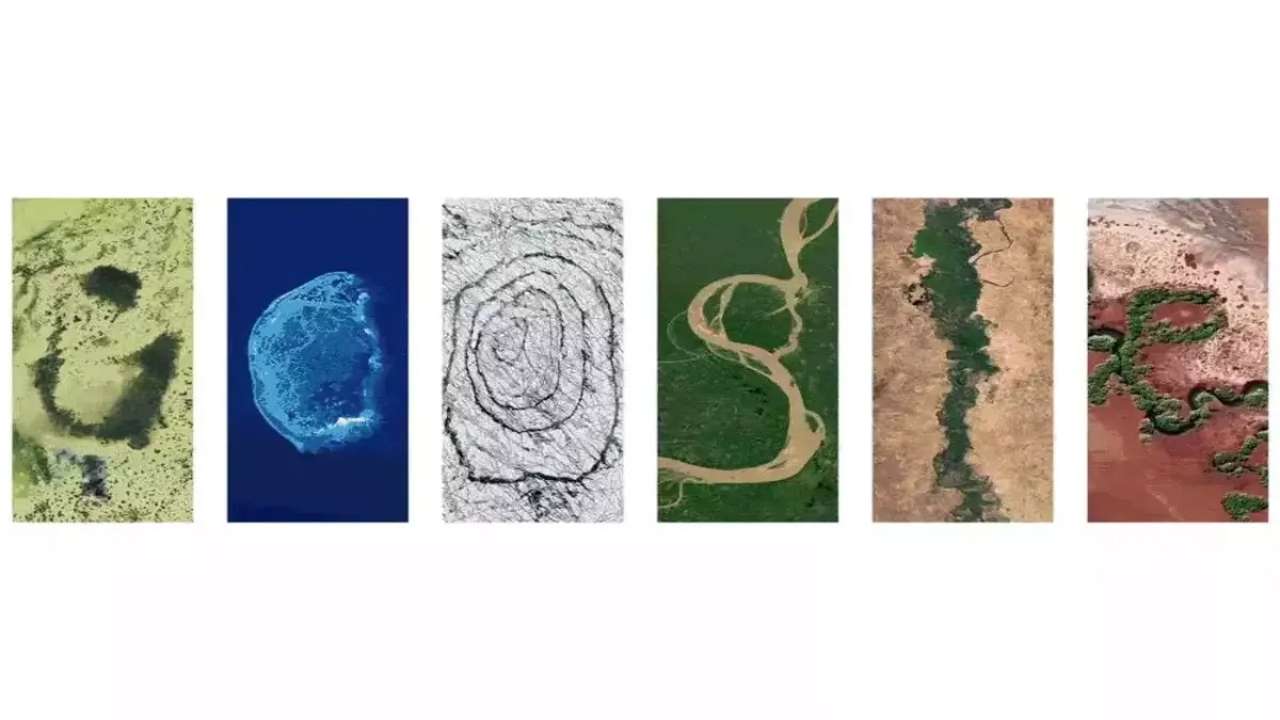
Google shared a doodle today to celebrate World Earth Day 2024, which showcased aerial photos of the planet’s biodiversity and natural beauty. Google reminded us of the importance of protecting planet earth for future generations with the help of this doodle.
The Google letters depict specific locations across the globe where people, communities, and governments work every day to help protect the planet’s natural beauty, biodiversity, and resources, according to the explanation of the annual Earth Day 2024 doodle on their website.
It said, these examples remind us that there’s much more to do to address the climate crisis and biodiversity loss, but also offer the promise of hope and optimism.
The islands of Turks and Caicos are represented by the letter “G.” The islands’ conservation efforts are concentrated on protecting important regions for biodiversity and addressing persistent environmental problems.
The largest reef in the southern Gulf of Mexico and a UNESCO biosphere reserve, Scorpion Reef National Park, is represented by the letter “O” in the Mexican flag.
The letter “O” features Iceland’s Vatnajokull National Park, which was designated as a national park in 2008 following decades of advocacy. The ecology within and surrounding the biggest glacier in Europe is safeguarded by this UNESCO World Heritage Site.
The letter “G” has the Jau National Park in Brazil on it. It is a UNESCO World Heritage Site and one of the biggest forest reserves in South America.
The Great Green Wall of Nigeria is represented by the letter “L,” and the Pilbara Islands Nature Reserves of Australia are represented by the letter “E.”
Meanwhile, Earth Day is a worldwide event that promotes protection of the environment every year. April 22 serves as a reminder of the importance of conservation efforts and sustainable practices to guarantee a healthier world and a brighter future.
The occasion inspires people across the world to come together and take action to protect the environment, strengthening our bonds with nature and promoting good change.
Latest world news
Bigg Boss 14 contestant Rahul Vaidya struggles walking in knee deep water, compares Dubai rains with Mumbai floods
Singer and TV personality Rahul Vaidya was recently stranded in the Dubai rains.
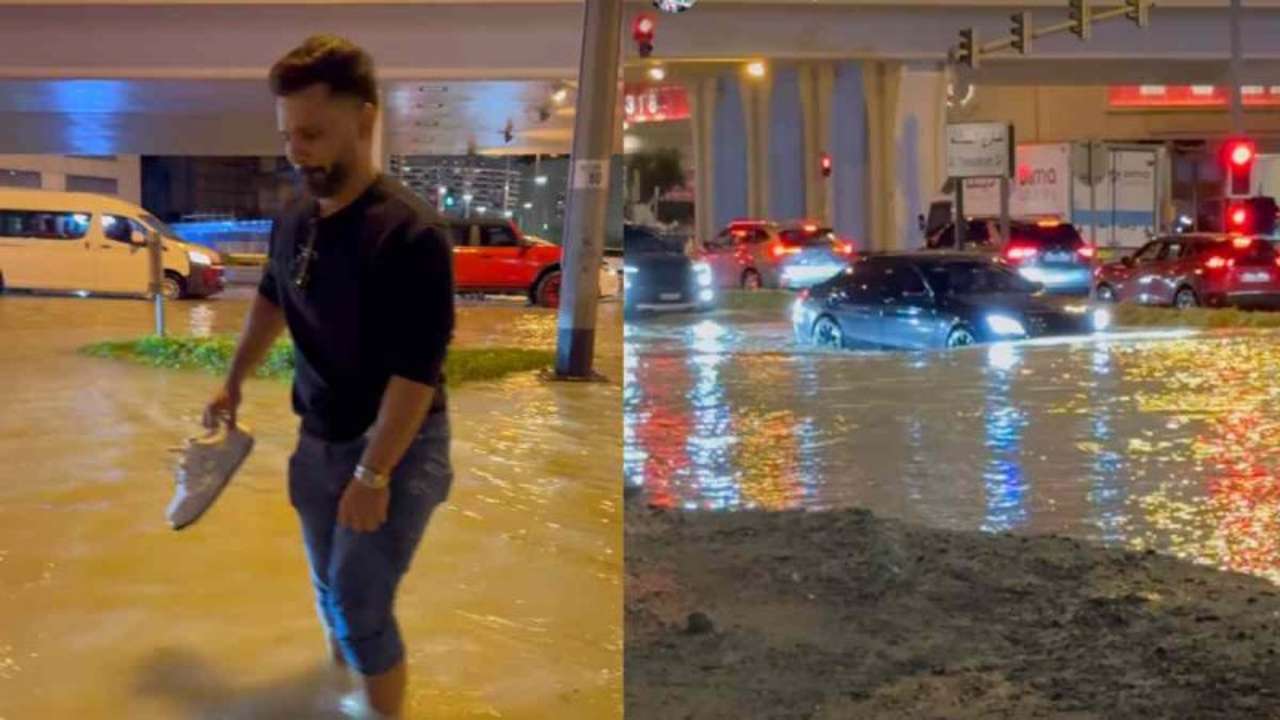
Rahul Vaidya, who was in Dubai ahead of his show which was scheduled to take place today, left the country due to heavy rains and reached Kolkata. The artist shared on social media his encounters in the UAE city, including challenges like walking through knee-deep water. Rahul provided an update regarding the heavy rainfall in Dubai on his Instagram profile.
The Bigg Boss 14 contestant revealed that he was in Kolkata and prepared to do an evening performance. Recalling the terrifying period he went through, Vaidya said there was a lot of confusion and panic in Dubai. The situation was similar to that when heavy floods hit Mumbai in 2005.
Vaiday also posted seval other images and videos of cars that were underwater and flooded roadways. The Bigg Boss 14 contestant, who shared his ordeal, claimed that even though it had just rained for two hours, the situation was dire.
In one of the video, which went viral he can be seen struggling in walking in knee-deep water. He can be also seen holding his sneakers in one hand and with other hand he was seen managing other things.
This is the result of the two hours of rain that it had, he can be heard saying in the video. Vidya also said he dosen’t believe Dubai is accustomed to a lot of rain. Everything had stopped working, he remarked.
After taking part in the first season of the singing reality show Indian Idol, Rahul Vaidya gained widespread recognition. In addition to Bigg Boss, he took part in Khatron Ke Khiladi 11.
Meanwhile, heavy rains that triggered flooding in the UAE and Bahrain, which left 18 people dead in Oman on Sunday and Monday, have paralyzed the financial hub of the Middle East, Dubai.
A lot of incoming flights were diverted from Dubai’s international airport because of the rain. At 7:26 p.m., the busiest airport in the world for foreign visitors stopped accepting new arrivals; a gradual resumption was announced for more than two hours later.
Images of planes navigating flooded tarmacs are making the rounds on social media.
According to pictures shared on social media, the flagship malls Dubai Mall and Mall of the Emirates both experienced heavy floods, while at least one Dubai Metro station had water up to the ankles.
There were several road collapses, severe flooding in residential areas, and numerous reports of leaks from windows, doors, and roofs.
Due to the unfavourable weather, schools around the United Arab Emirates were forced to close, and as more storms are predicted, the closures are anticipated to last until Wednesday. The government of Dubai allowed its staff to work remotely till this Wednesday.
Latest world news
Dubai sky turns green during storm in UAE, video goes viral
The UAE witnessed record-breaking rainfall on Tuesday and the National Centre of Meteorology recorded 254 mm of rainfall in less than 24 hrs in the Khatm Al Shakla area in Al Ain.
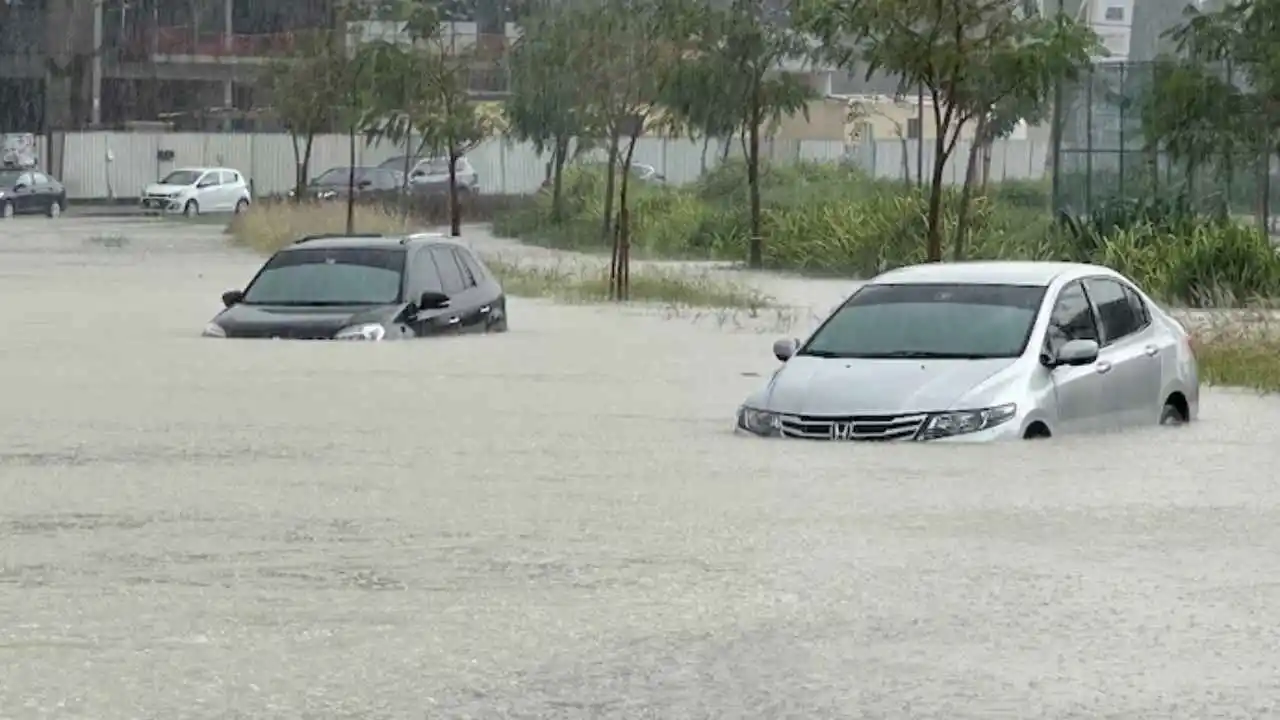
1 person was killed in UAE as it witnessed heavy rainfall on Tuesday, stranding commuters, flooding roads, disrupting trains and flights and resulting in water leakage from mall ceilings. The UAE witnessed record-breaking rainfall on Tuesday and the National Centre of Meteorology recorded 254 mm of rainfall in less than 24 hrs in the Khatm Al Shakla area in Al Ain. It is being said that the rainfall was the highest documented since the start of data collection in 1949.
The heavy rainfall in UAE came days after a similar situation in neighbouring Oman, where 13 people were killed in flash floods. Many parts of Oman saw torrential rains, which caused students to be trapped in buses and swept away motorists and trapped people in their homes.
Videos from Dubai circulating on social media showed widespread waterlogging on roads in Abu Dhabi, Dubai and other important cities. This left daily commuters in cars and other vehicles struggling to get back home. Dubai metro station too was seen flooded and closed.
One such video circulating on social media shows the aerial view of the city of Dubai from the top of a building. In the video the stormy winds are seen blowing over the city of Dubai. As the storm intensifies the Dubai sky turns green and ultimately gets covered by heavy rainfall. The video has gone viral on social media with more than 1.1 million views.
Another video showed water leakage from the ceilings of shopping malls, flooding the floors and destroying goods. A video which was shot in the famous Mall of the Emirates, showed pieces of ceiling falling as the rainwater gushed inside. Videos from many outlets of the Deira City Centre mall chain showed escalators being rendered unusable. Majid Al Futtaim, the company which owns the Mall of Emirates, said that the shopping complexes have been kept open and the customers are being sent away from the flooded areas.
-
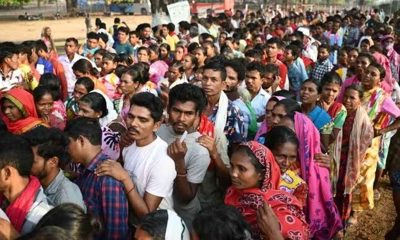
 2024 Lok Sabha Elections20 hours ago
2024 Lok Sabha Elections20 hours agoLok Sabha election 2024: Nearly 50% voter turnout recorded in second phase till 3 pm
-
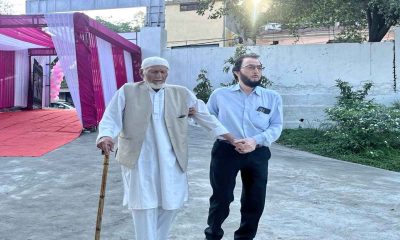
 2024 Lok Sabha Elections23 hours ago
2024 Lok Sabha Elections23 hours agoLok Sabha elections 2024: 102-year-old man walks to polling booth to cast his vote in Jammu
-
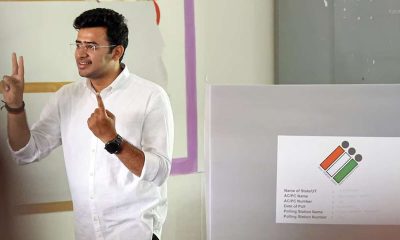
 2024 Lok Sabha Elections18 hours ago
2024 Lok Sabha Elections18 hours agoElection Commission books BJP MP Tejasvi Surya for seeking votes in the name of religion
-

 Cricket news1 hour ago
Cricket news1 hour agoIPL 2024: Punjab Kings beat Kolkata Knight Riders by 8 wickets to chase down highest T20 total



